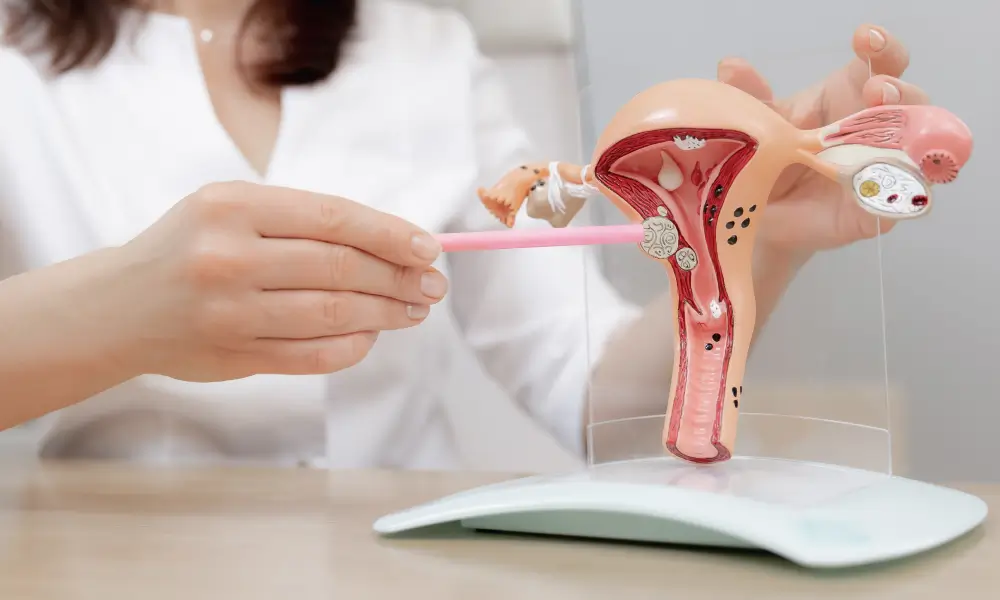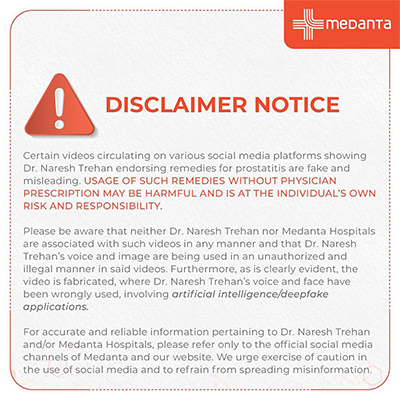The Rise of Robotic Surgery in Gynecology: A Revolution in Minimally Invasive Care

TABLE OF CONTENTS
Surgical progress has come a long way and has completely transformed patient outcomes in the management of benign gynaecologic lesions. Outdated open surgery used to result in much larger cuts, longer stays, and greater post-operative pain. But today, robotic gynaecologic surgery has turned the entire game around.
Be it robotic hysterectomy for fibroids or robotic endometriosis surgery. Robotics technologies nowadays allow for unprecedented precision, reduced blood loss, and faster recovery. This is not a step up in technology—it's a revolution in women's care.
This blog will discuss how minimally invasive gynaecologic surgery has evolved with robotics and why it has become the new choice in the treatment of benign lesions.
Robot-Assisted Surgeries for Gynaecological Conditions
Robotic surgery entered the field of gynaecology in the early 2000s. With robotic platforms such as the da Vinci Surgical System, surgeons were able to now execute extremely intricate operations with levels of precision never before seen.
How Does Robotic Surgery Work?
In contrast to conventional laparoscopy, where a surgeon directly operates instruments, robotic platforms provide an enhanced technique:
3D High-Definition Vision – Surgeons have an expanded, crystal-clear vision of the operative site.
Wristed Instruments – Robot arms replicate human wrist movement, enabling greater flexibility and accuracy.
Tremor Filtration – Eliminates hand tremors, making fine procedures safer.
Smaller Incisions – Reduced pain, fewer scars, and quicker recovery.
For individuals in need of robotic hysterectomy, robotic myomectomy, or robotic surgery for endometriosis, these advancements mean vastly improved results.
Key Procedures in Robotic Gynaecologic Surgery
Robotic surgery has transformed the treatment of benign gynaecological diseases with enhanced precision, minimal scarring, and quicker recovery. The most common robotic surgeries in gynaecology are listed below:
1. Robotic Hysterectomy: Transforming Uterine Treatment
Hysterectomy, or removal of the uterus, is among the most prevalent gynaecologic surgeries. It is most frequently needed for:
Uterine fibroids cause pain, irregular bleeding, or infertility
Extensive endometriosis
Adenomyosis, in which the lining of the uterus grows within the muscular wall
Severe abnormal uterine bleeding not responding to other treatments
Conventional open hysterectomy makes big belly cuts, but robotic hysterectomy makes small keyhole cuts. Through the robot, surgeons can traverse very small spaces within pelvic nerves and vessels with unmatched precision, minimising the risk of injury to adjacent organs such as the bladder or bowel.
Here are some of its benefits:
Less pain and quicker return – Most women resume normal activity in 1-2 weeks versus 6-8 weeks with open surgery.
Less blood loss – Reduced incisions and greater control minimise blood loss and transfusion risk.
Less scarring – Small incisions result in improved cosmetic results compared to open surgery.
Fewer complications – Nerve sparing lessens the risk of bladder and impotence injury post-surgery.
For those women requiring a hysterectomy, robots offer a safer, quicker, and less painful option.
2. Robotic Myomectomy: The Fibroid Breakthrough
Fibromas (benign tumours of the uterus) are among the leading causes of heavy menstruation, pelvic pressure, and infertility. Women who wish to leave their uterus intact for future pregnancy or other personal reasons usually choose a robotic myomectomy over a traditional hysterectomy.
Robotic removal of fibroids is superior to conventional myomectomy procedures due to the following:
Accurate fibroid removal with minimal destruction of uterine healthy tissue
Improved uterine suturing with less risk of rupture during future pregnancy
Shorter hospitalisation – Patients can be discharged in 24 hours
Less postoperative pain and quicker recovery
By enabling accurate suturing and minimal blood loss, robotic myomectomy is the treatment of choice for women who are eager to conceive.
3. Robot-Assisted Endometriosis Surgery
Endometriosis is a debilitating illness wherein uterine tissue grows outside the uterine cavity and leads to chronic pelvic pain, infertility, and organ adhesions. Conventional surgery is unable to remove all endometriotic implants completely, resulting in recurrence.
Here are some reasons why robot-assisted endometriosis surgery is revolutionary:
Robotics give much greater leverage to doctors over the patient and their body so that they can remove even small lesions that would most likely be missed in traditional laparoscopy.
The robotic arms make the whole procedure highly precise so that the surgeon can remove abnormal tissues without harming nearby organs.
There are lower recurrence rates as total removal of deeply infiltrating endometriotic lesions reduces the opportunity for regrowth.
The fertility outcomes are improved by maintaining ovarian function and reducing damage to the reproductive organs.
4. Robotic Sacrocolpopexy
Pelvic organ prolapse (POP) happens when muscles in the pelvis weaken and the bladder, uterus, or rectum protrude into the vaginal canal. Robotic sacrocolpopexy is a less invasive surgery that recreates normal anatomy through suspension of the vaginal vault using surgical mesh.
Here are some advantages of robotic sacrocolpopexy:
Increased, more robust support compared to standard vaginal prolapse repair
Reduced pain and quicker recovery
Improved long-term outcome with a decreased recurrence rate
This technique is best suited for women with severe to moderate prolapse, providing a strong and effective surgical repair.

Benefits of Robotic Gynaecologic Surgery
Robotic surgery has revolutionised gynaecologic surgery completely, providing a less invasive, more accurate, and quicker-healing option compared to open surgery. Following are some of the reasons why surgeons and patients alike are increasingly favouring robotic gynaecologic surgery today.
1. Minimally Invasive
One of the greatest benefits of robotic procedures is that they are a type of minimally invasive gynaecologic surgery. Compared to open procedures with large incisions in the abdomen, robotic procedures are done through small keyhole incisions. For women with jobs, families, or work-related commitments, this shorter recovery is a huge plus.
2. Unparalleled Accuracy and Improved Results
Robotic surgery gives surgeons superior high-definition, 3D visualisation of the surgical site, enabling:
More precise removal of fibroids, endometriosis tumours, and affected tissues
Improved protection of healthy organs
Lower risk of damaging adjacent nerves, bladder, or intestines
This is especially worth its while in advanced procedures like robotic endometriosis surgery, where millimeter precision equals huge advantages in reducing recurrence rates.
3. Less Blood Loss and Fewer Complications
Traditional open surgeries result in massive blood loss, increasing the chances of a blood transfusion. Robotic procedures dramatically reduce the risk, with:
Less blood loss during procedures
Lower infection rates
Greater wound healing and less scarring
This renders robotic myomectomy and robotic hysterectomy safer options, especially in women with big fibroids or previous abdominal surgery.
4. Enhanced Fertility Outcomes
Fertility preservation is a priority in women having robotic myomectomy or robotic surgery for endometriosis.
Robotic accuracy allows for gentle fibroid removal without disrupting the uterus.
Endometriosis removal is more complete, enhancing pregnancy chances.
The formation of scar tissue is less than with conventional surgery, reducing infertility complications.
For women who wish to become pregnant, robotic gynaecologic surgery offers the greatest hope of preserving fertility and solving underlying issues.
5. Quick Hospital Discharge and Rapid Return to Living
One of the biggest disadvantages of robotic gynaecologic surgery is the long hospital stay and recovery time. With robotics:
The majority of patients are discharged home from the hospital on the same day or after 24 hours.
Routine daily activities can be resumed after a week or two as opposed to months.
Less dependence on pain medicines decreased post-op use of opioids.
Less interruption in daily life, decreased medical expenses, and a much more comfortable post-op stay.
Final Words
Robotic gynaecologic surgery has changed the trajectory of managing benign ailments of the female reproductive system. It could be robotic hysterectomy, robotic myomectomy, or robotic endometriosis surgery—the advantage is obvious: less pain, quick return to normal life, and better surgical dexterity.
As technology advances, minimally invasive gynaecologic surgery will be only safer, more effective, and more accessible. For gynaecologic problems in women, robotic surgery isn't an option—it's the future. If you or someone you know is experiencing any gynaecological issues, then consult a gynaecologist at your nearest super-specialty hospital as soon as possible!
FAQs
How long is the recovery after a robotic hysterectomy?
Recovery varies for each person, but most women can return to normal in 1-2 weeks. Compared to the 6-8 weeks of recovery time after an open hysterectomy, it's a definite advantage.
Is robotic surgery superior to laparoscopy for gynaecologic surgery?
Yes. Although both are types of minimally invasive gynaecologic surgery, robotics is more precise, has 3D vision, and superior control, which results in superior outcomes.
Can I become pregnant following a robotic myomectomy?
Yes! Robotic myomectomy enables the fibroids to be precisely excised without jeopardising the uterus. Most women conceive afterward.
Is robotic surgery more expensive than standard surgery?
Although robotic gynaecologic surgery may be more costly upfront, it generally pays for itself in the long term by decreasing complication rates, hospital stays, and return to work.
Is robotic surgery safe for the treatment of endometriosis?
Yes. Robotic endometriosis surgery enables surgeons to remove lesions accurately, inflicting less trauma on surrounding tissues and decreasing the risk of recurrence.






